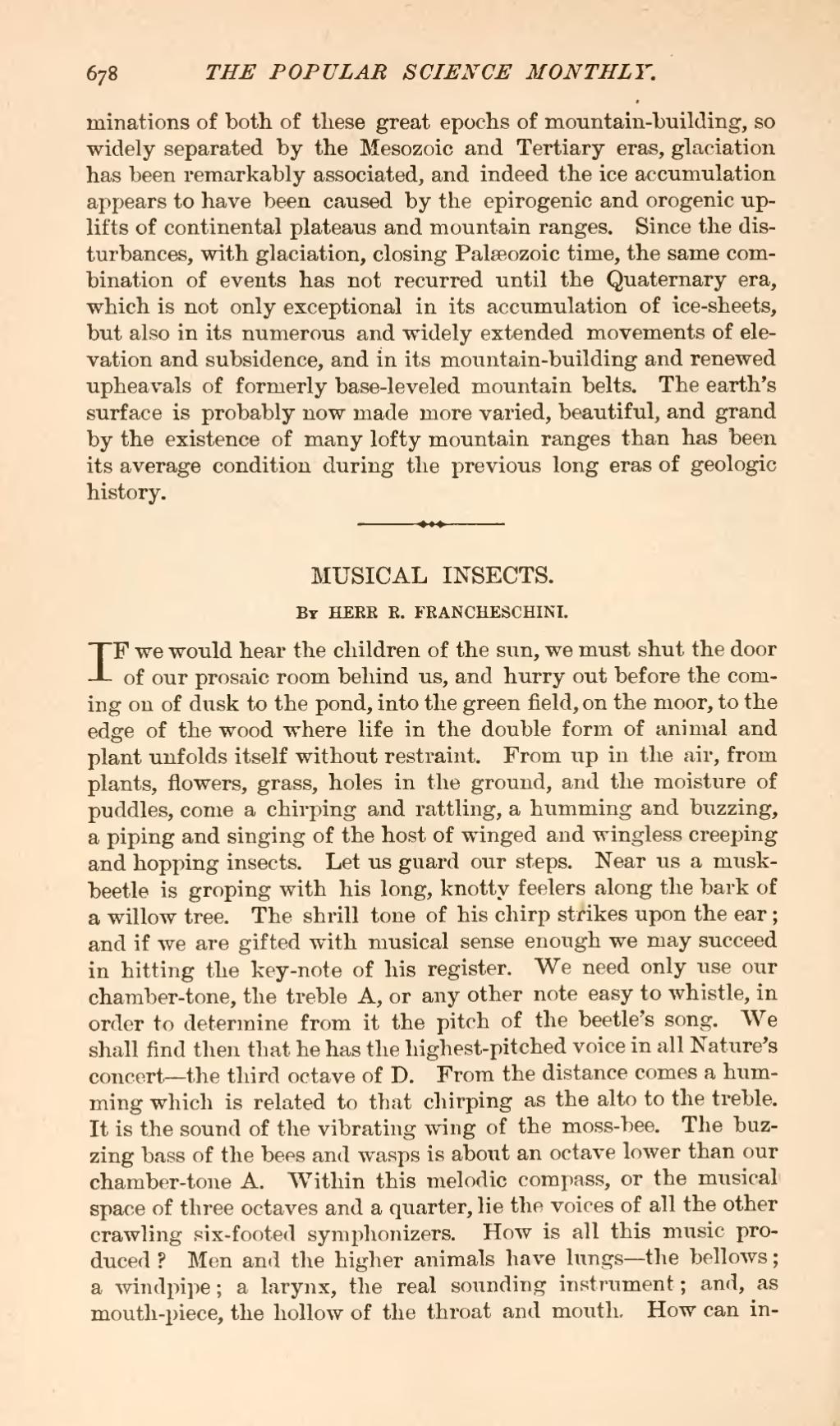minations of both, of these great epochs of mountain-building, so widely separated by the Mesozoic and Tertiary eras, glaciation has been remarkably associated, and indeed the ice accumulation appears to have been caused by the epirogenic and orogenic uplifts of continental plateaus and mountain ranges. Since the disturbances, with glaciation, closing Palæozoic time, the same combination of events has not recurred until the Quaternary era, which is not only exceptional in its accumulation of ice-sheets, but also in its numerous and widely extended movements of elevation and subsidence, and in its mountain-building and renewed upheavals of formerly base-leveled mountain belts. The earth's surface is probably now made more varied, beautiful, and grand by the existence of many lofty mountain ranges than has been its average condition during the previous long eras of geologic history.
| MUSICAL INSECTS. |
By HERR R. FRANCHESCHINI.
IF we would hear the children of the sun, we must shut the door of our prosaic room behind us, and hurry out before the coming on of dusk to the pond, into the green field, on the moor, to the edge of the wood where life in the double form of animal and plant unfolds itself without restraint. From up in the air, from plants, flowers, grass, holes in the ground, and the moisture of puddles, come a chirping and rattling, a humming and buzzing, a piping and singing of the host of winged and wingless creeping and hopping insects. Let us guard our steps. Near us a musk-beetle is groping with his long, knotty feelers along the bark of a willow tree. The shrill tone of his chirp strikes upon the ear; and if we are gifted with musical sense enough we may succeed in hitting the key-note of his register. We need only use our chamber-tone, the treble A, or any other note easy to whistle, in order to determine from it the pitch of the beetle's song. We shall find then that he has the highest-pitched voice in all Nature's concert—the third octave of D. From the distance comes a humming which is related to that chirping as the alto to the treble. It is the sound of the vibrating wing of the moss-bee. The buzzing bass of the bees and wasps is about an octave lower than our chamber-tone A. Within this melodic compass, or the musical space of three octaves and a quarter, lie the voices of all the other crawling six-footed symphonizers. How is all this music produced? Men and the higher animals have lungs—the bellows; a windpipe; a larynx, the real sounding instrument; and, as mouth-piece, the hollow of the throat and mouth. How can in-

